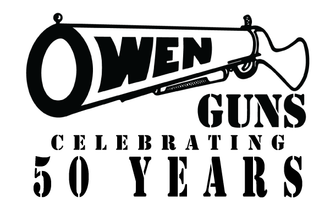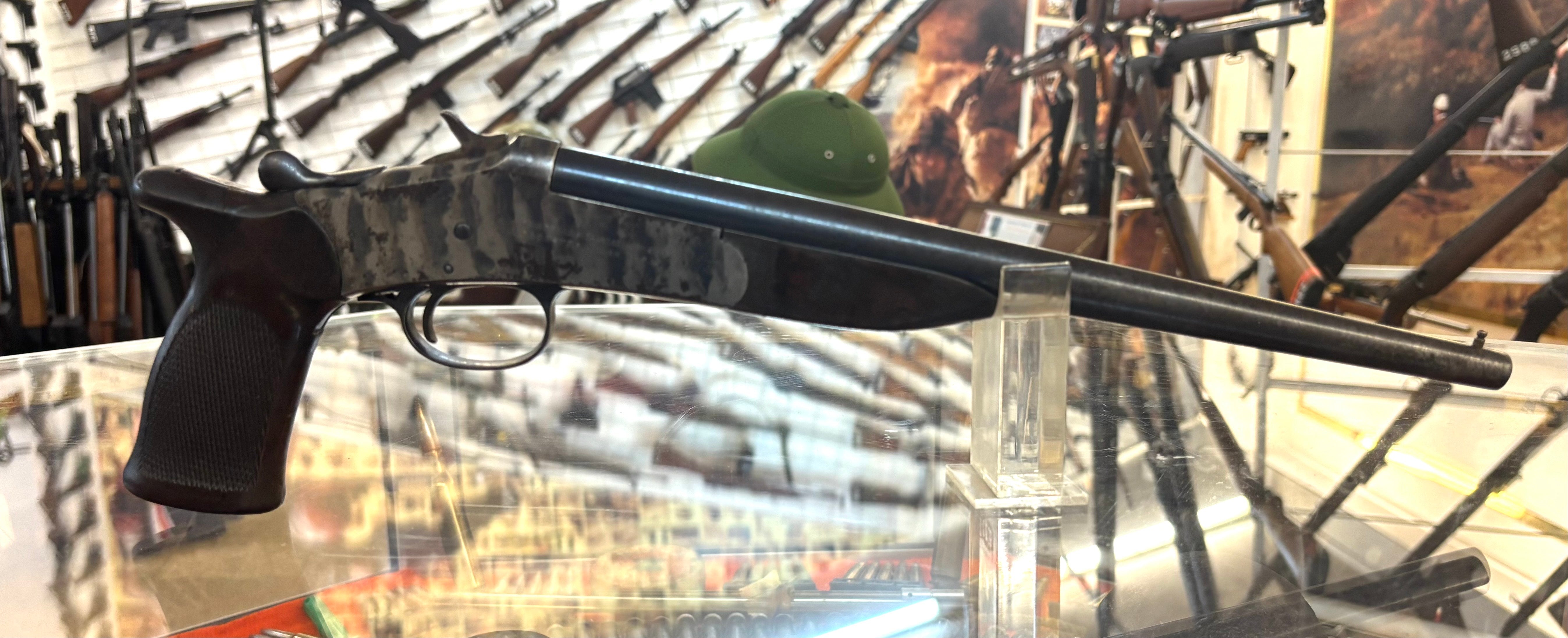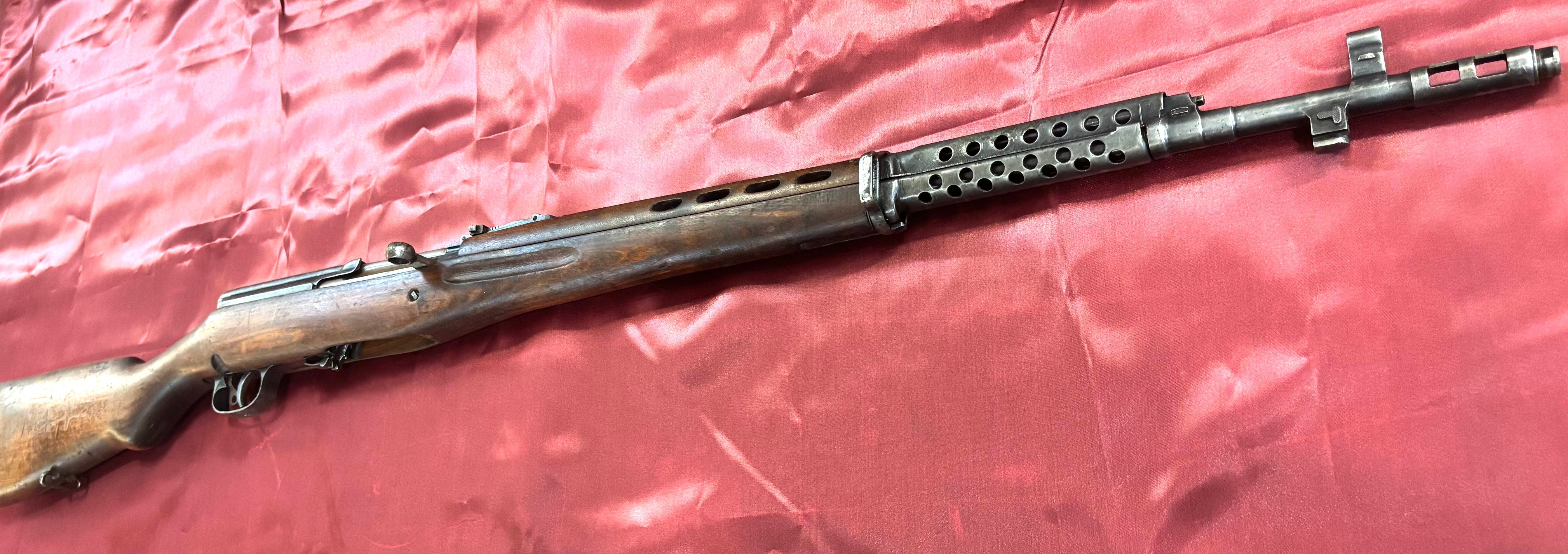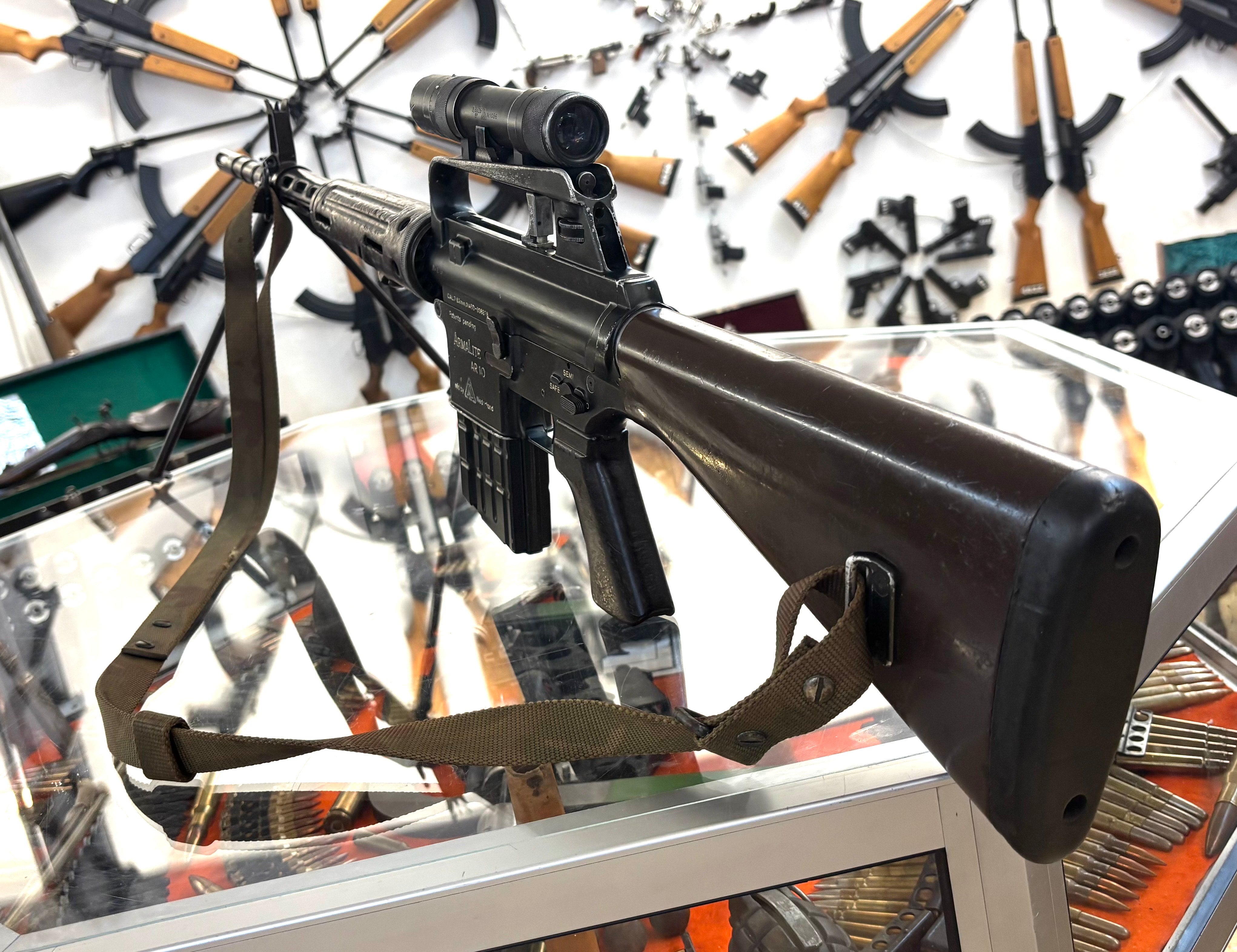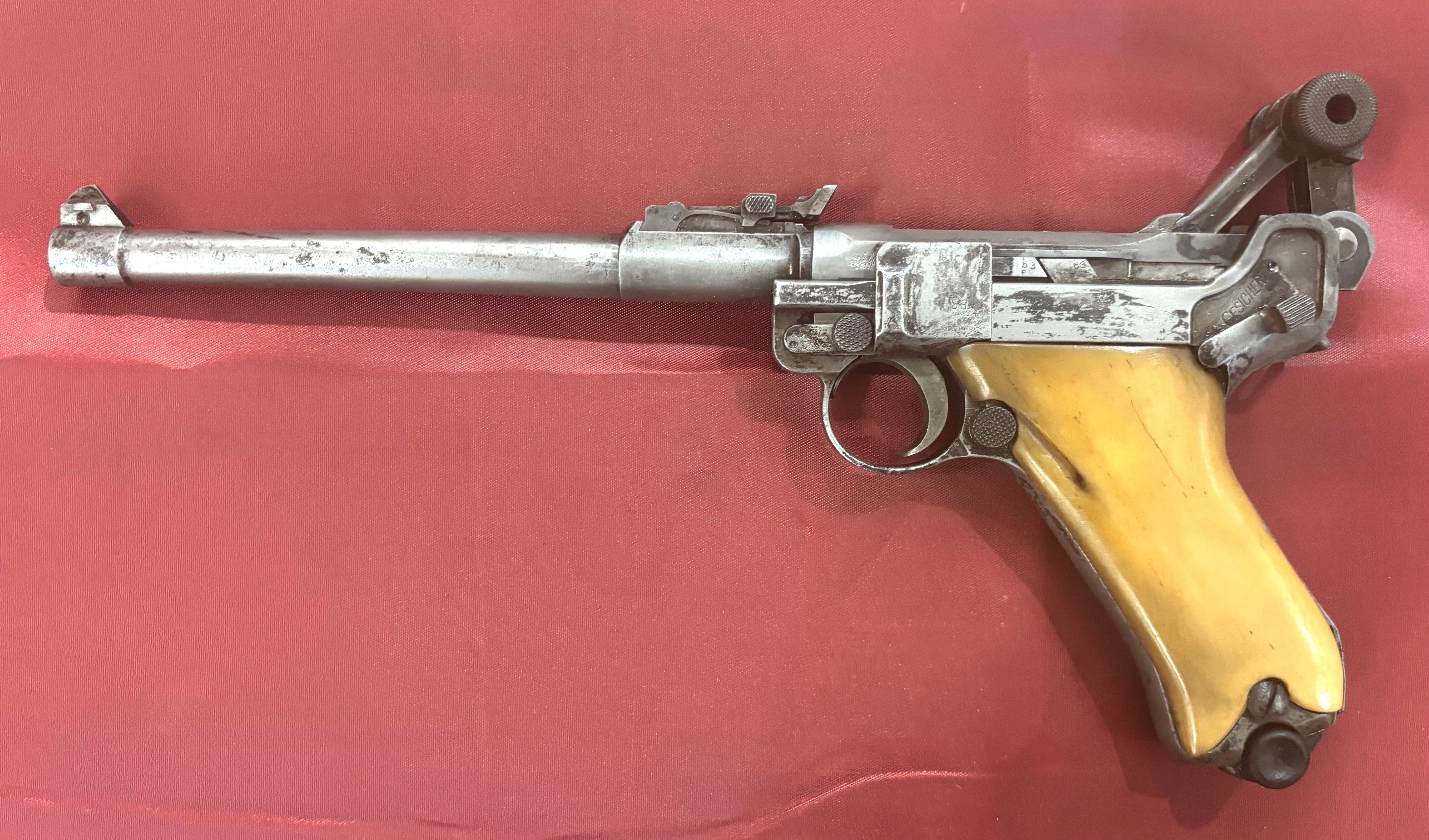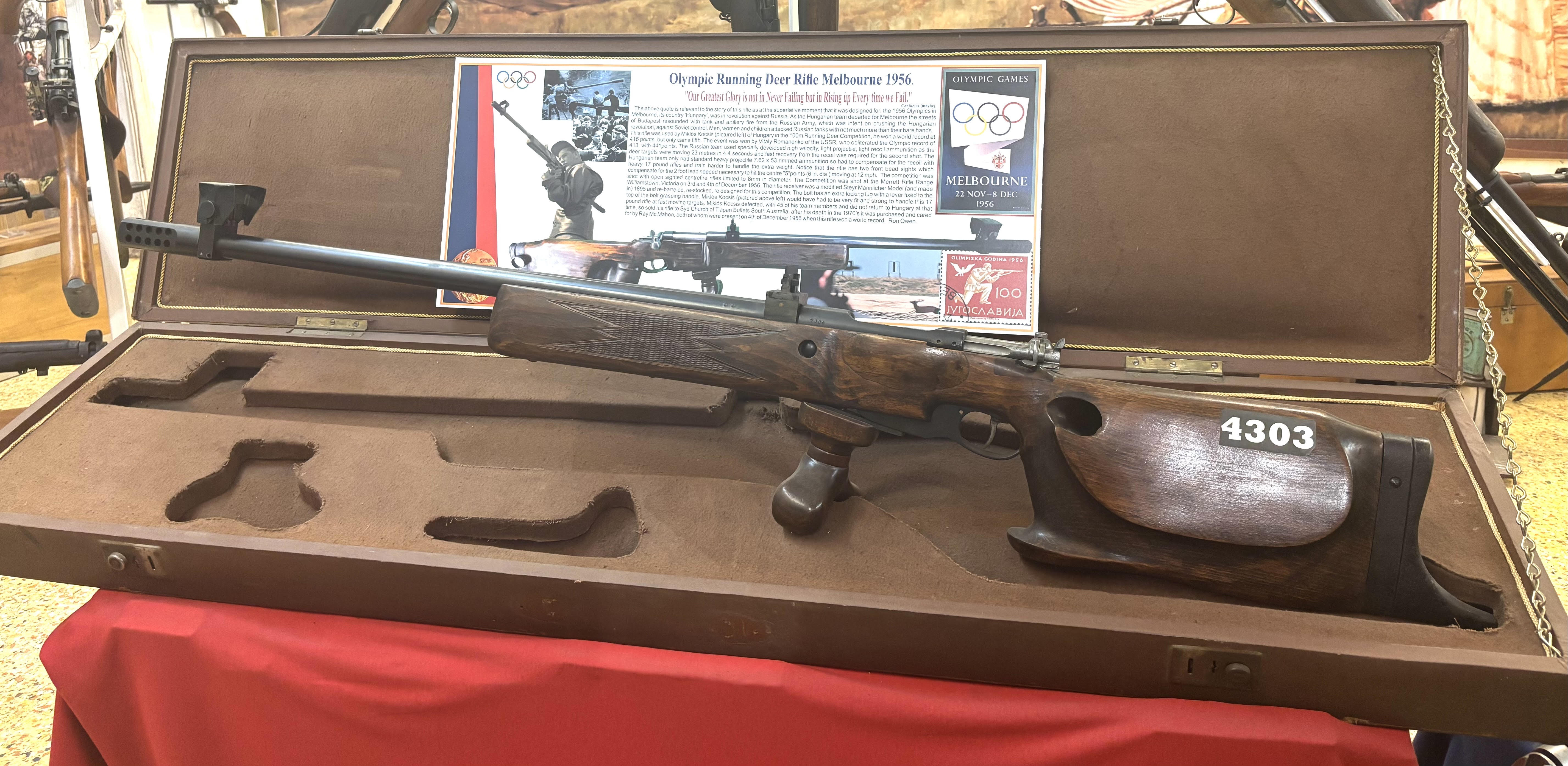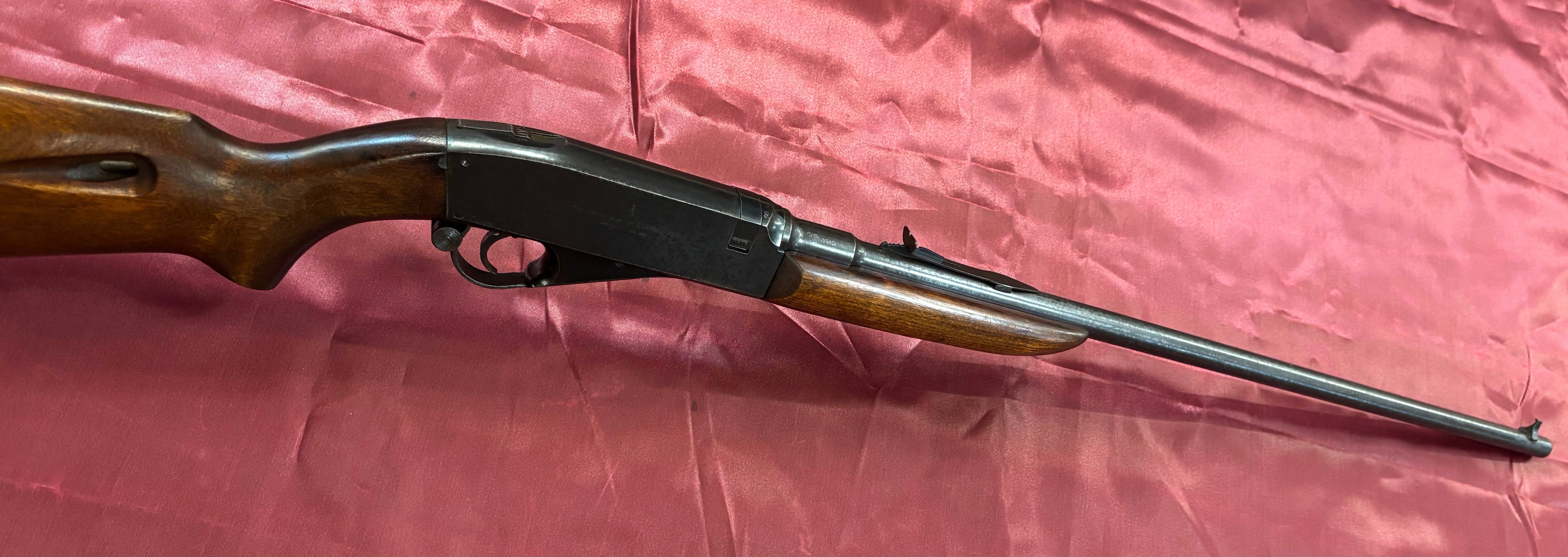
BSA Ralock 22 Semi Automatic Repeating Rifle
This week for Firearm Friday we are putting the spotlight on the B.S.A Ralock 22LR Semi-Automatic Repeating Rifle.

The Ralock was manufactured by the Birmingham Small Arms Company from 1947 to 1951.

BSA began in June 1861 in the Gun Quarter, Birmingham, England. It was formed by a group of fourteen gunsmith members of the Birmingham Small Arms Trade Association specifically to manufacture guns by machinery. New machinery developed in the USA installed at Enfield had greatly increased its output without needing more skilled craftsmen. This new machinery brought to Birmingham the principle of the interchangeability of parts and mass production.

BSA bought 25 acres of land at Small Heath, Birmingham, built a factory there and made a road on the site called Armoury Road. Their enterprise was rewarded in 1863 with an order for 20,000 Turkish infantry rifles.

In 1906, Frank Dudley Docker was appointed a director of the company. By the autumn of that year BSA had purchased the Sparkbrook Royal Small Arms Factory from the War Office, and in return, the War Office undertook to give BSA a quarter of all orders for Lee–Enfield rifles. But the War Office did not complete this order. Albert Eadie became a BSA director, a post he held until his death in 1931.

By the outbreak of the Second World War, BSA Guns Ltd at Small Heath, was the only factory producing rifles in the UK. The Royal Ordnance Factories did not begin production until 1941. BSA Guns Ltd was also producing .303 Browning machine guns for the Air Ministry at the rate of 600 guns per week in March 1939 and Browning production was to peak at 16,390 per month by March 1942.

The next stage of progression from the B.S.A. was the slide or "pump" action rifles, the Ralock was specifically aimed at the increasing number of imported semi-automatic .22RF repeating rifles, particularly those from the Unites States of America.

Introduced late in 1947 chambered for the .22 short cartridge, of innovative design and superb quality, the rifle was expensive to manufacture, had limited magazine capacity, and was perhaps less reliable than other contemporary tubular magazine fed equivalents, the Winchester and Remington semi-autos in particular. Although the 'Short cartridge' model of the rifle would hold a dozen cartridges. Although the rifle was, in 1949, lengthened by five inches to 43¾ ins., to accommodate the .22LR cartridge, the available butt length still restricted the Long Rifle model to only eight rounds capacity. It was named the “Ralock” due to its radial locking action. And it wasn't mass produced, there were only 5,696 firearms produced.

The BSA Ralock featured a semi-automatic blow-back hammerless breech block design. The action design features a blow-back breech block shaped like a nearly quarter-circle segment. This block pivots at its base and gets locked back, simultaneously cocking the rifle, when the integrated trigger guard and underlever are pulled down. This action also reveals a compartment beneath the rifle where the fired empty cases are stored.

The spent casings were ejected by pushing down and forward on the trigger guard that acted somewhat like a lever-action. This movement would open up the compartment where the spent casings were and allow them to fall freely out of the gun.

The BSA Ralock is hard to come by these days with only the 5,696 firearms produced; many were exported and finding one for sale these days is a rarity. In the world of firearms, the Ralock is a truly one of a kind rimfire rifle design that is likely not to be produced again. Its radial locking action, enclosed receiver, and limited production add an element of rarity for owners and collectors of the rifle. The Ralock is also another aged example of the takedown rifle that has features beyond the takedown mechanism that make it unique, unlike other rimfire examples of the era.

Our Ralock is number 1903 in our museum and is on display everyday for your viewing pleasure.




